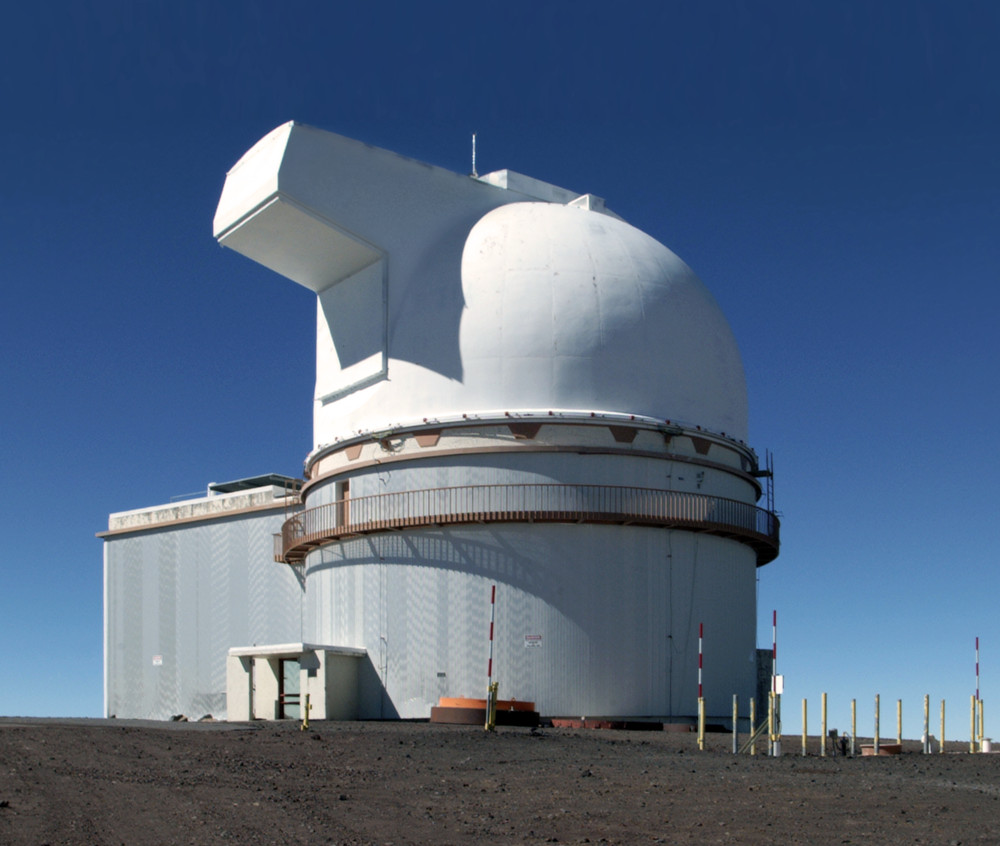
Big Island Video News | Dec 16, 2022
(BIVN) – Shortly after the Mauna Loa eruption migrated into the Northeast Rift Zone on November 28, lava crossed the Mauna Loa Observatory Road and cut the power the facilities collecting critical atmospheric data. The data is considered “vital to understanding how Earth’s climate is changing”, according to the University of Hawaiʻi.
On Friday, the UH announced it is partnering with the National Oceanic and Atmospheric Administration, or NOAA, to continue making the measurements on Maunakea. From the university news release:
NOAA scientists recently installed an intake tube less than an inch in diameter and 25 feet long on the UH 88 inch observatory to sample the summit air after data collection on Maunaloa was abruptly disabled when lava from the Maunaloa eruption cut off staff access and power lines to NOAA’s Mauna Loa Observatory (MLO). Atmospheric measurements have been taken on Maunaloa since 1958 providing more than six decades of data to track global climate change through CO2 measurements.
Under an emergency agreement, NOAA and UH established a temporary measurement site at the UH 88 inch to ensure the continuity of CO2 data collection and other atmospheric measurements taken at MLO. The Department of Land and Natural Resources Office of Conservation and Coastal Lands, also provided expedited site plan approval for this important project.
“The data gathered over many decades in Hawai‘i are essential to our understanding of climate change,” said Steve Thur, NOAA assistant administrator for Oceanic and Atmospheric Research. “We are always grateful for the strong partnership with the University of Hawai‘i, but especially now when we need a way to ensure continuity in the measurement of CO2. Being able to pull atmospheric samples from Maunakea while MLO is down ensures that any disruption to this important long-term research will be minimal.”
The NOAA team will collect air samples in flasks to measure almost 60 gasses, including methane—the second most important greenhouse gas measurement after CO2 —at intervals similar to what was being done at MLO before the eruption.
“As conditions related to climate change worsen around the globe, it was critical for UH to step in to assist NOAA as scientists scrambled to get atmospheric data collection back up and running,” said Doug Simons, director at the UH Institute for Astronomy. “Maunakea plays an important role in research that extends beyond astronomy.”
NOAA plans to continue measurements on Maunakea for at least a year to compare data with the Maunaloa locations.
The NOAA team also worked with UH scientists to install a separate small intake tube on the existing weather monitoring station on Maunakea for CO2 measurements by the Scripps Institution of Oceanography at UC San Diego. NOAA and Scripps scientists make independent measurements of CO2 at Maunaloa. Along with measurements made at the MLO site, NOAA also ships air samples to NOAA’s Global Monitoring Laboratory in Boulder, Colorado for further analysis.
NOAA staff continue to work with federal, state and private partners on plans to return to MLO and get all of the instruments there back online quickly.


